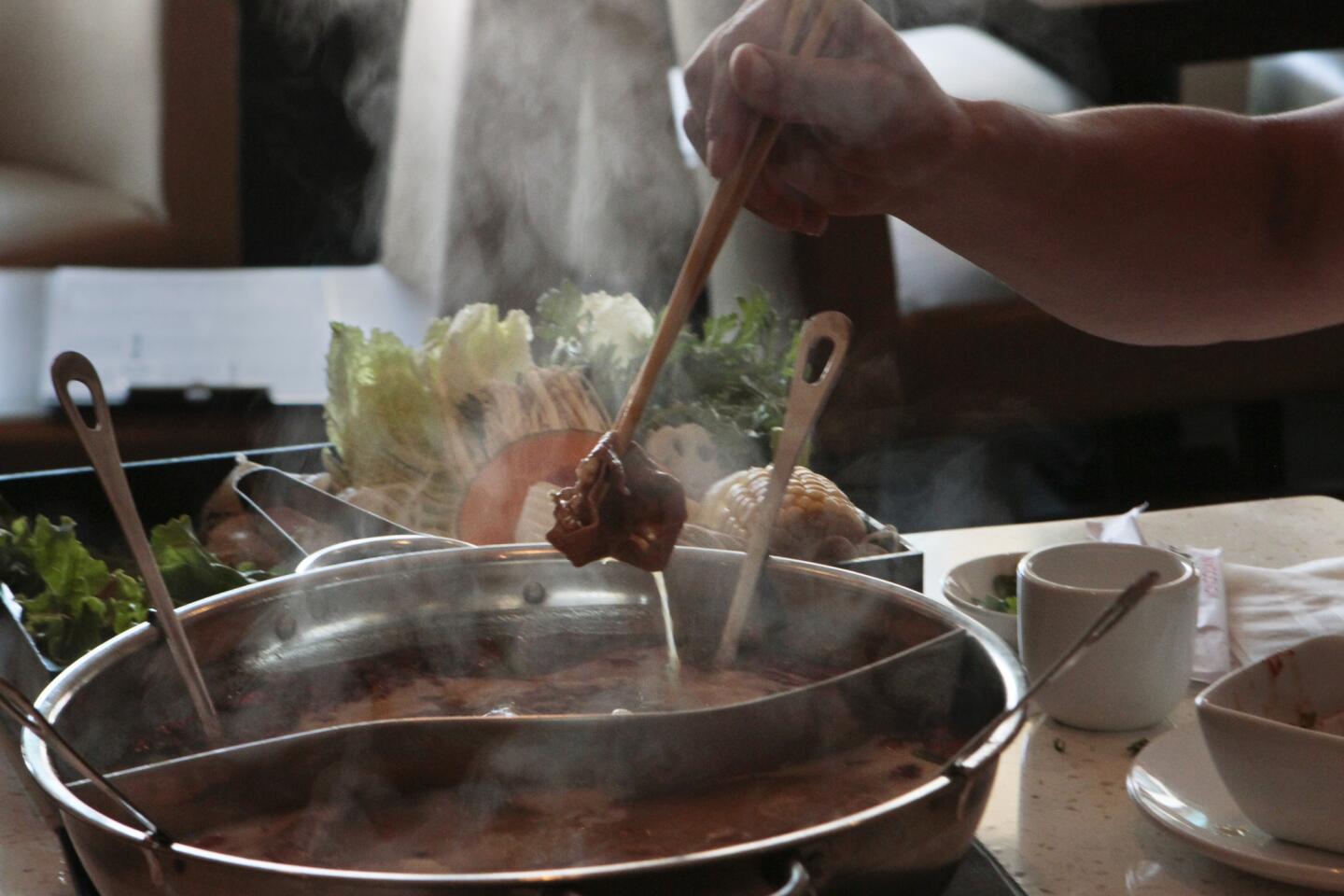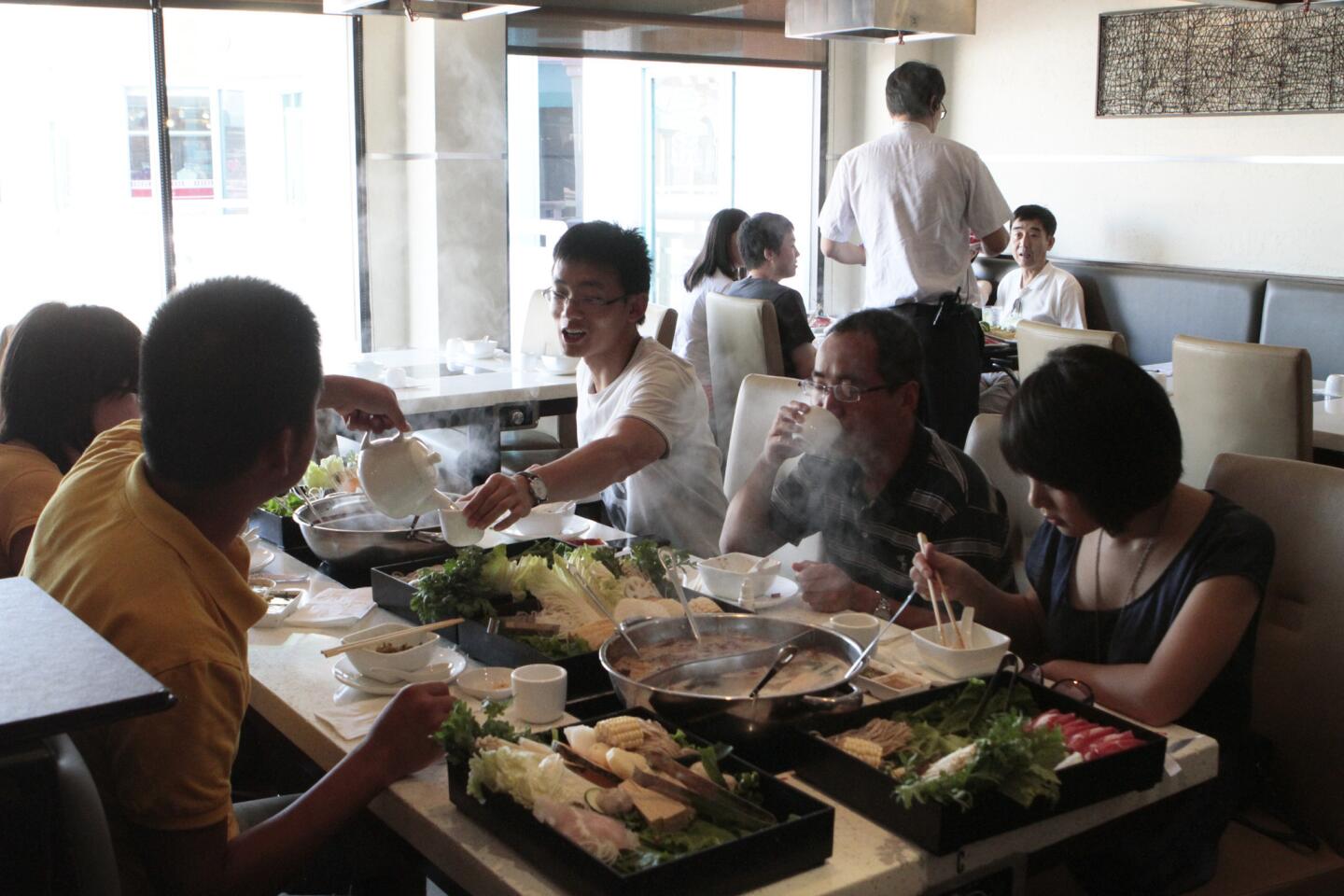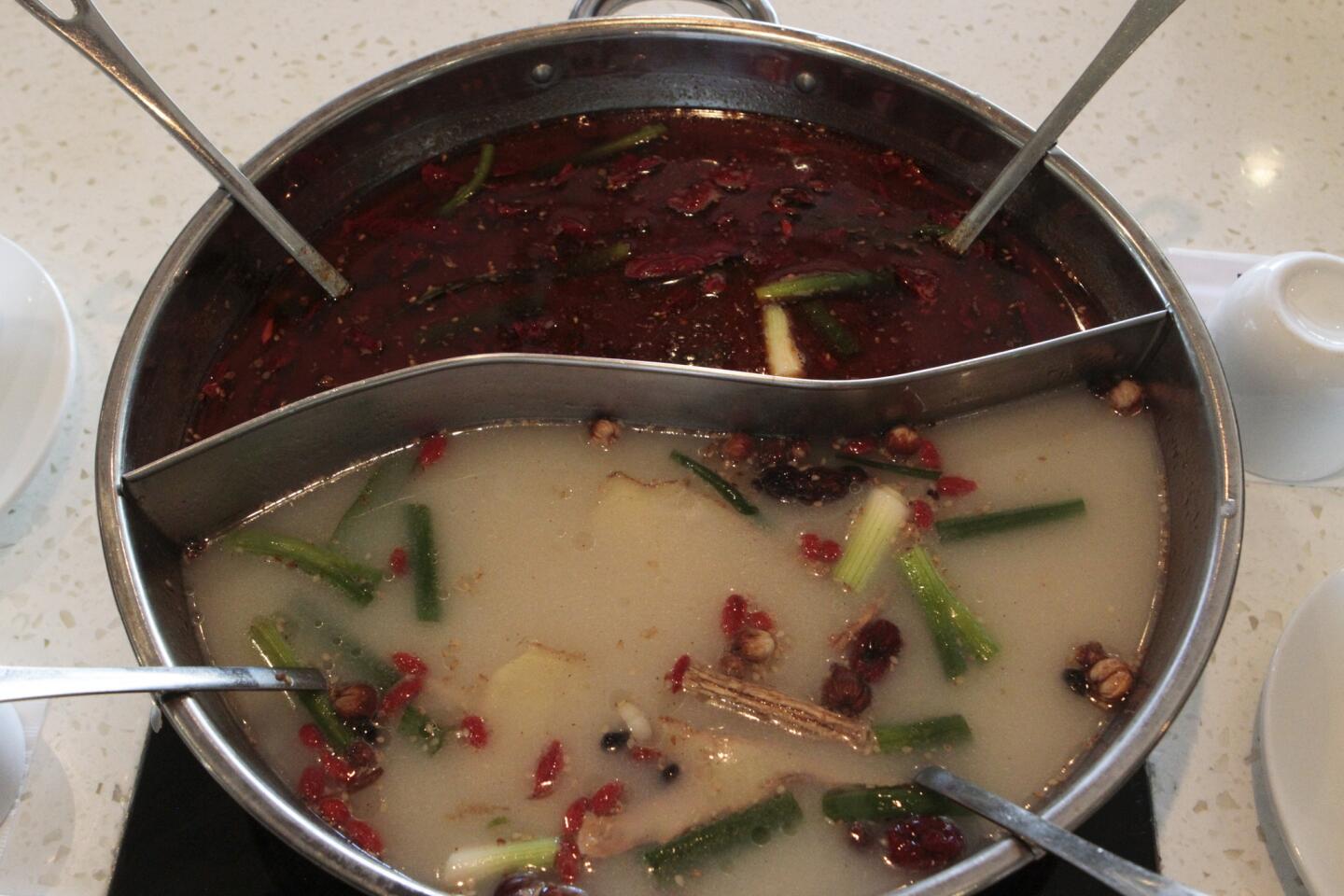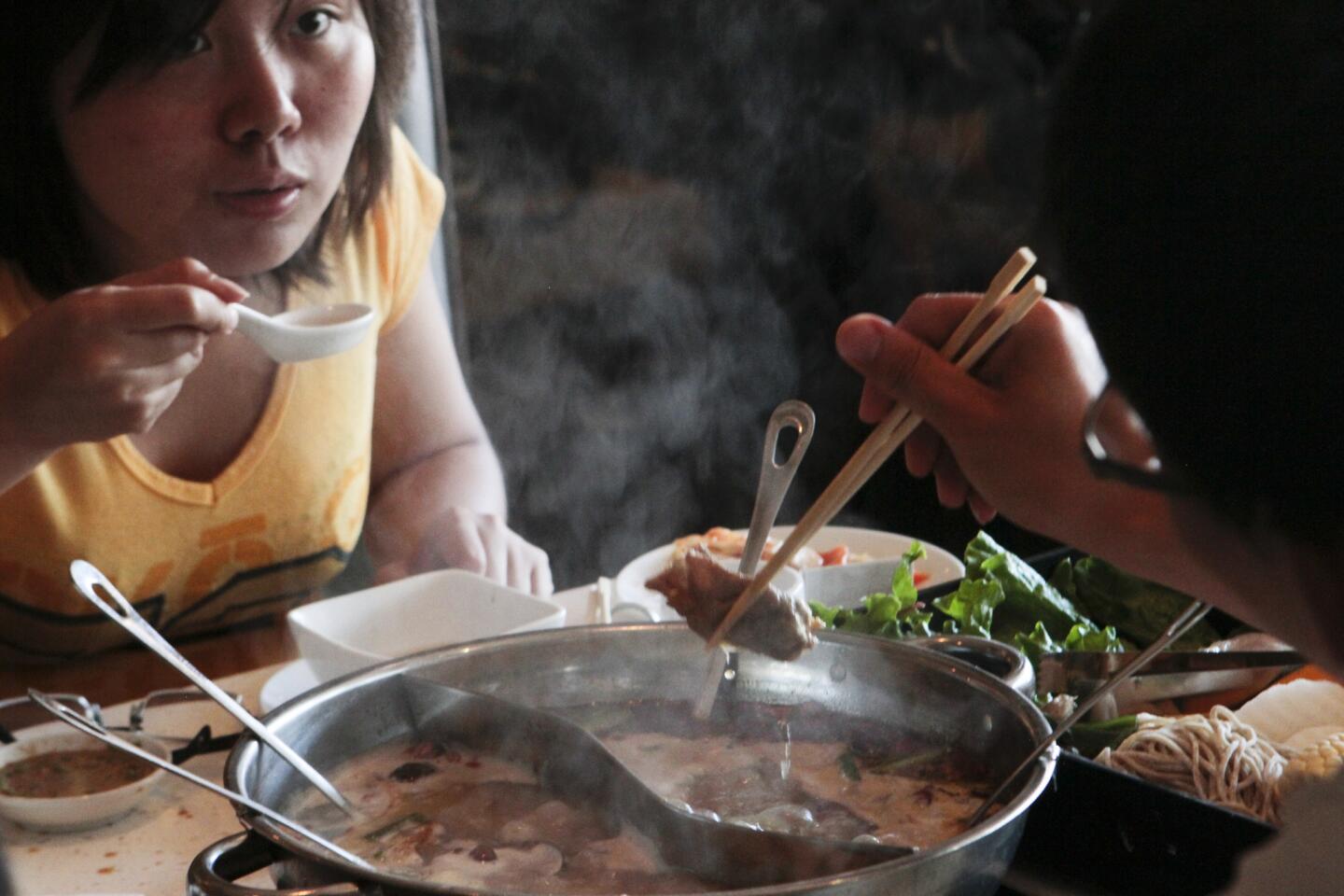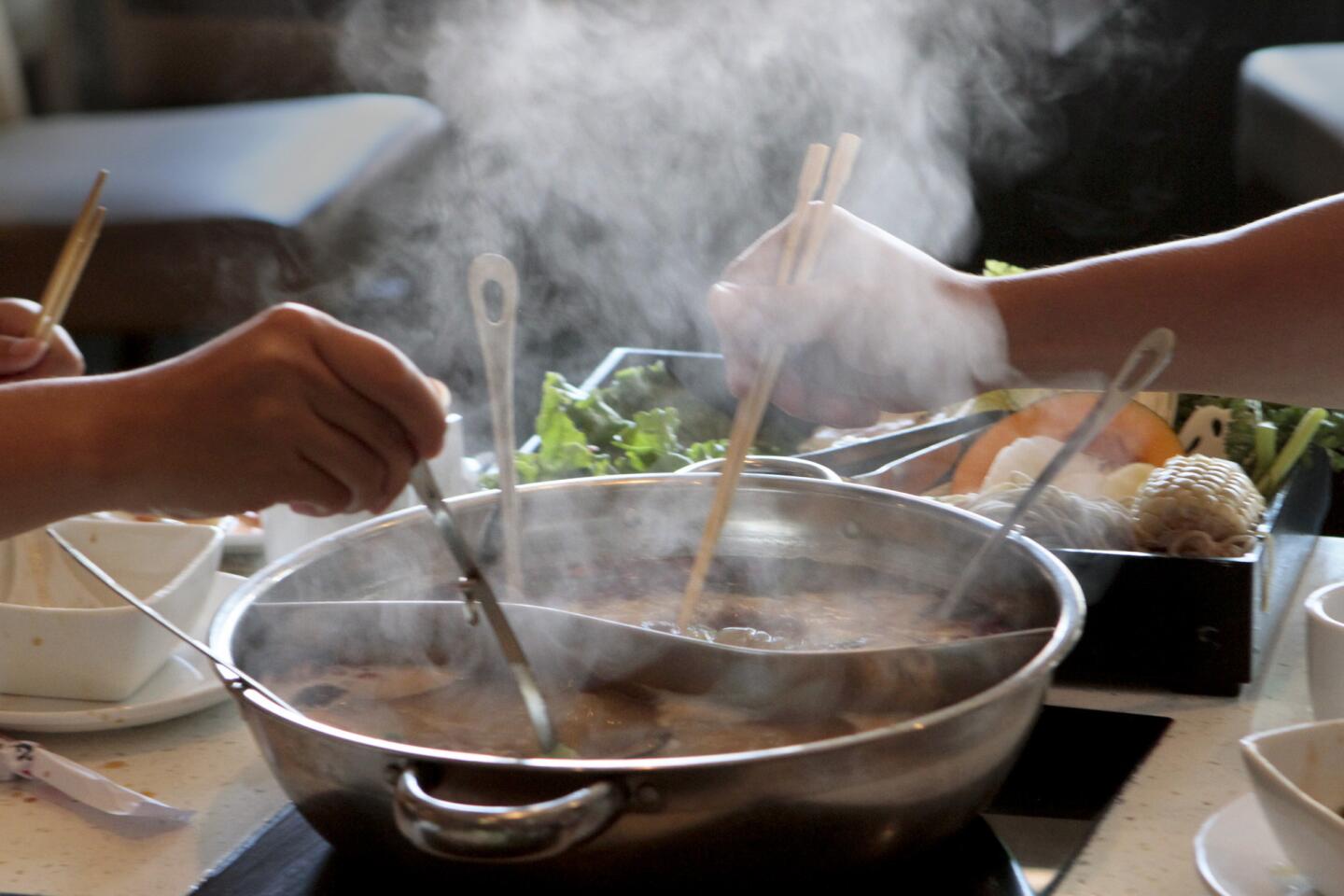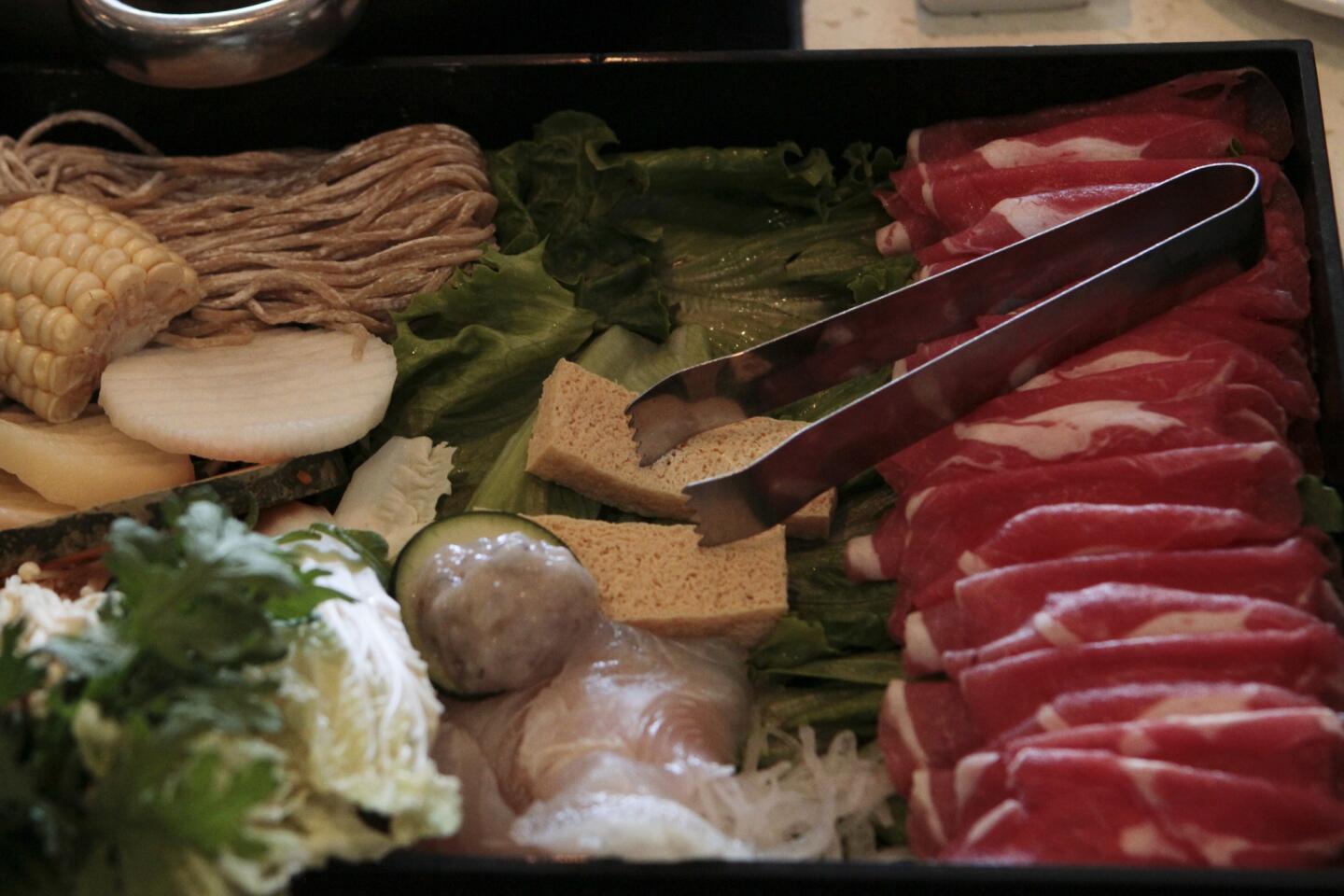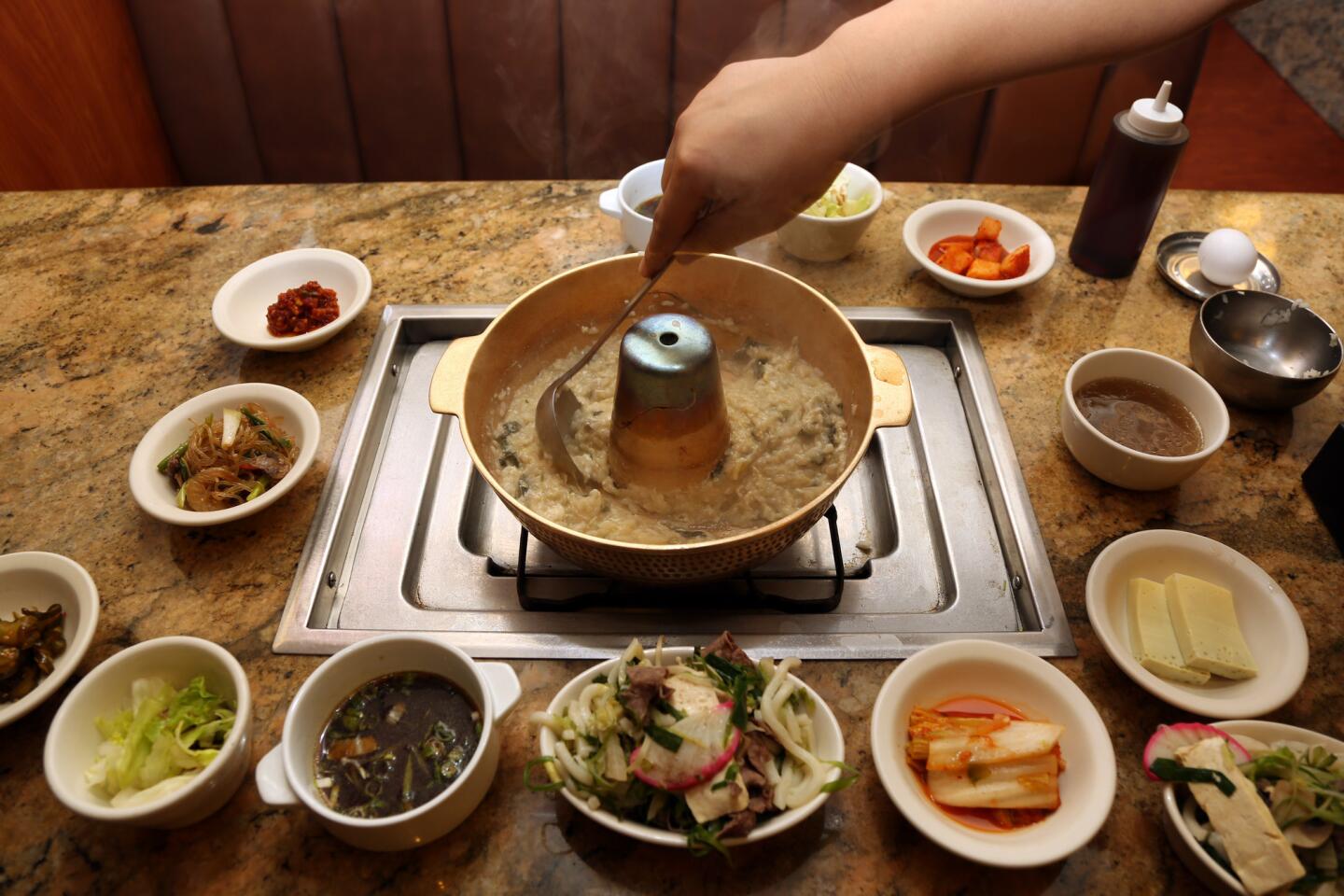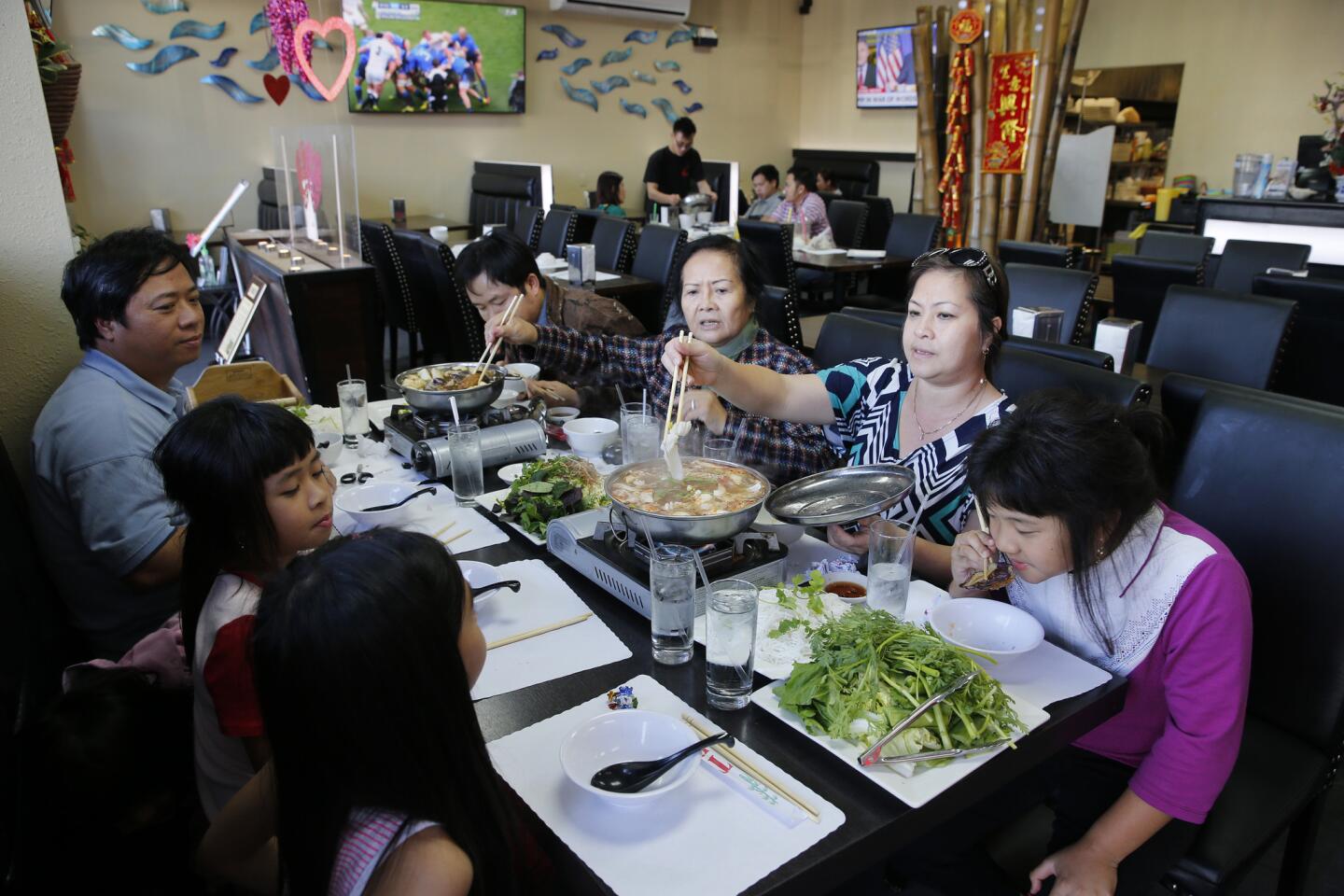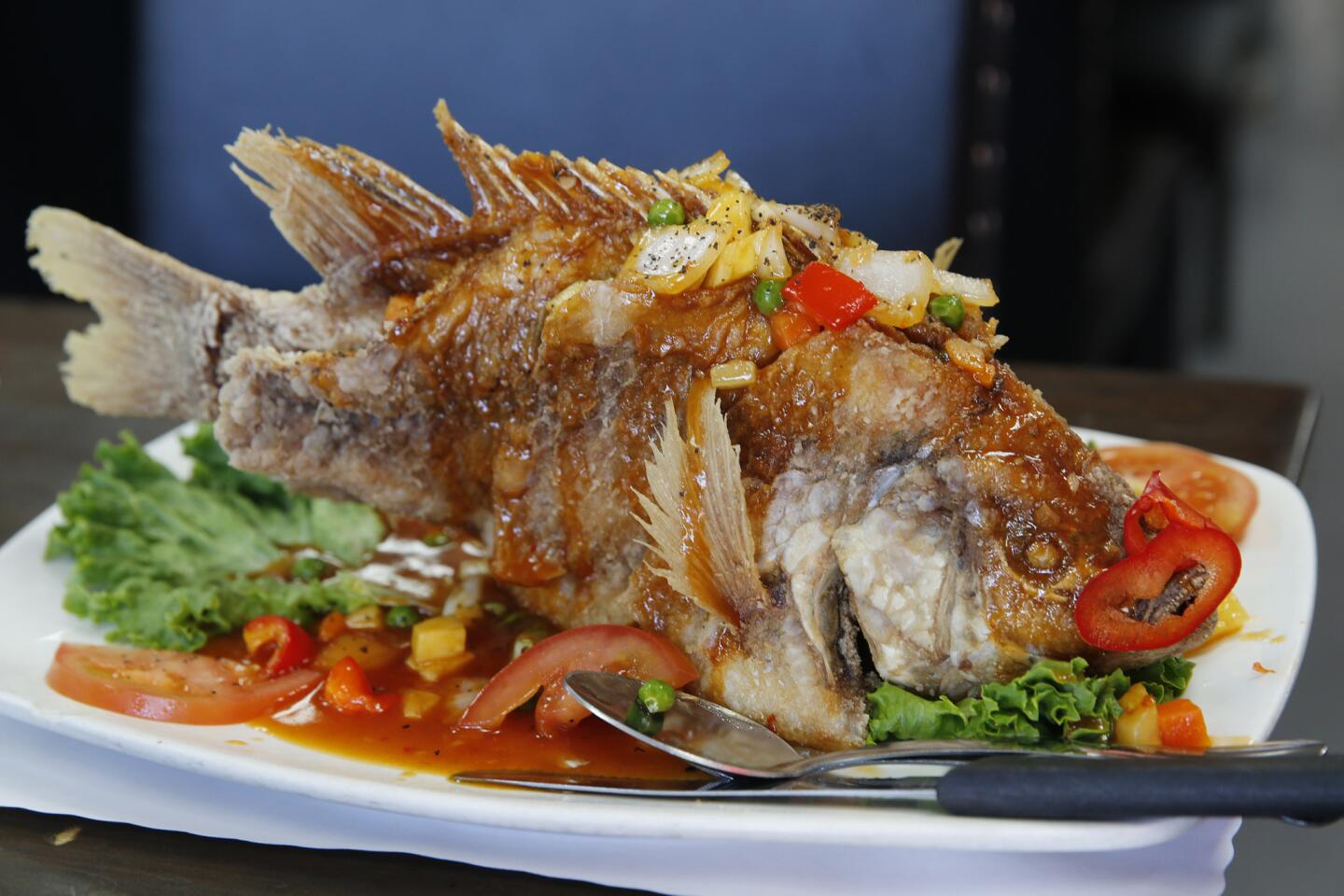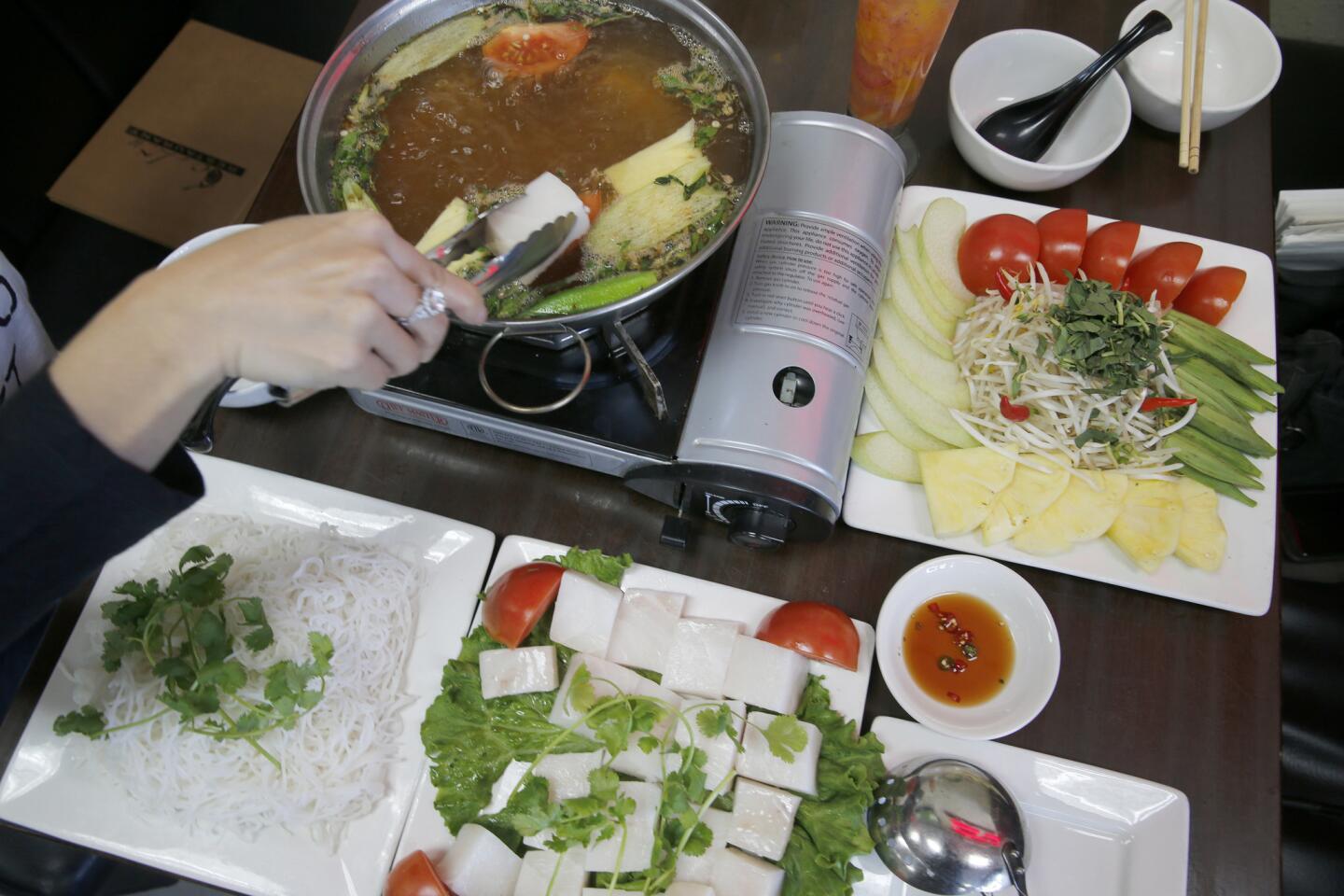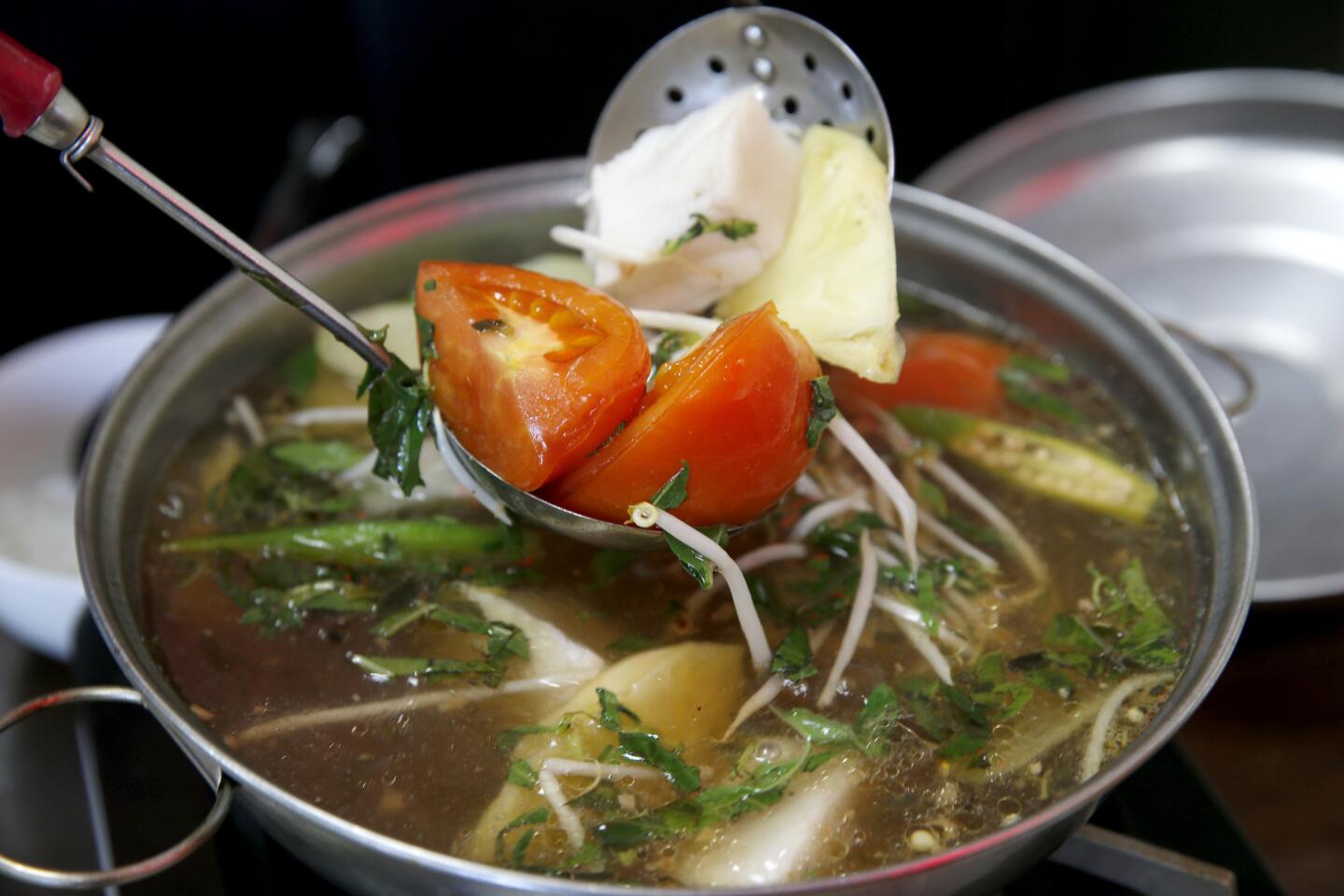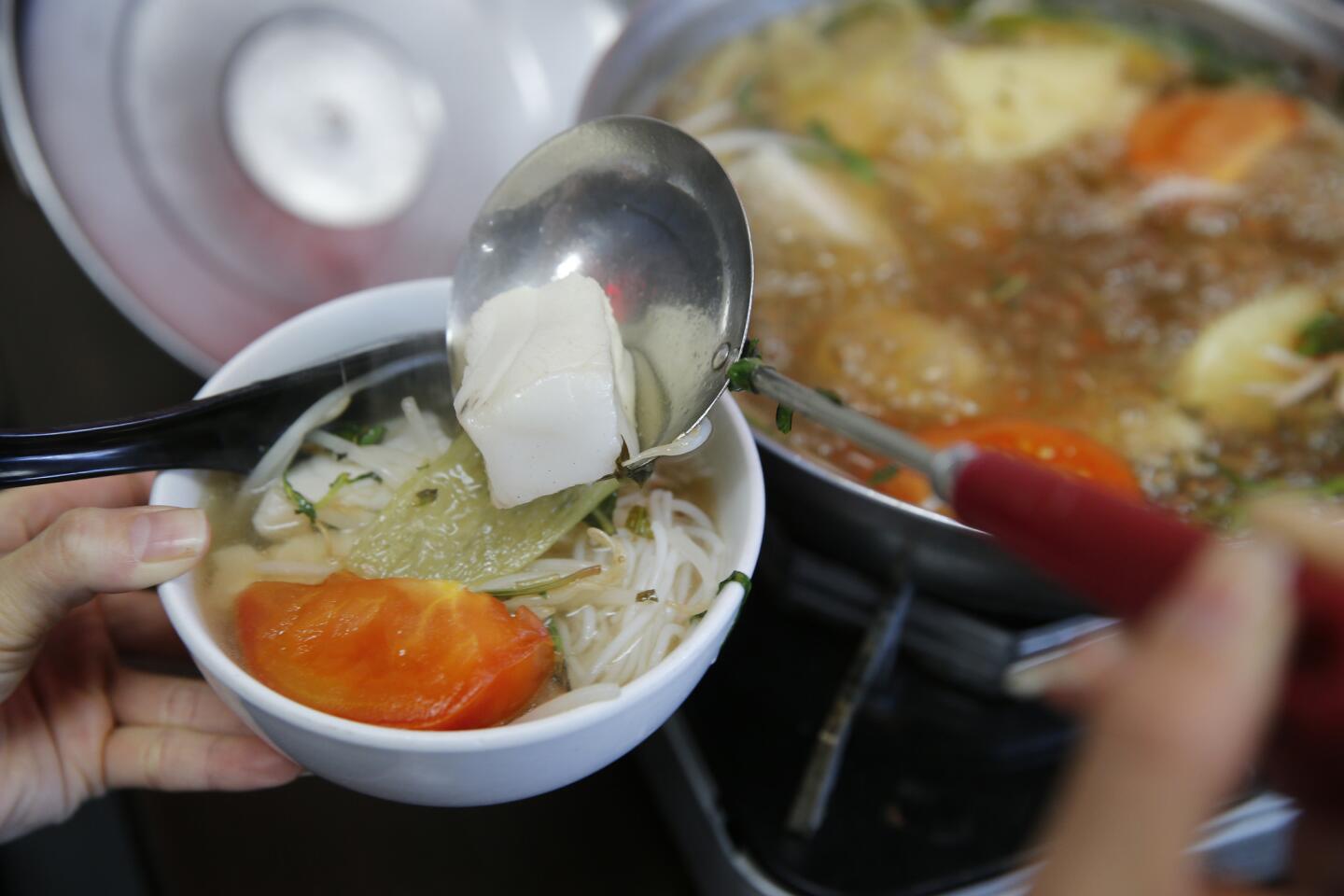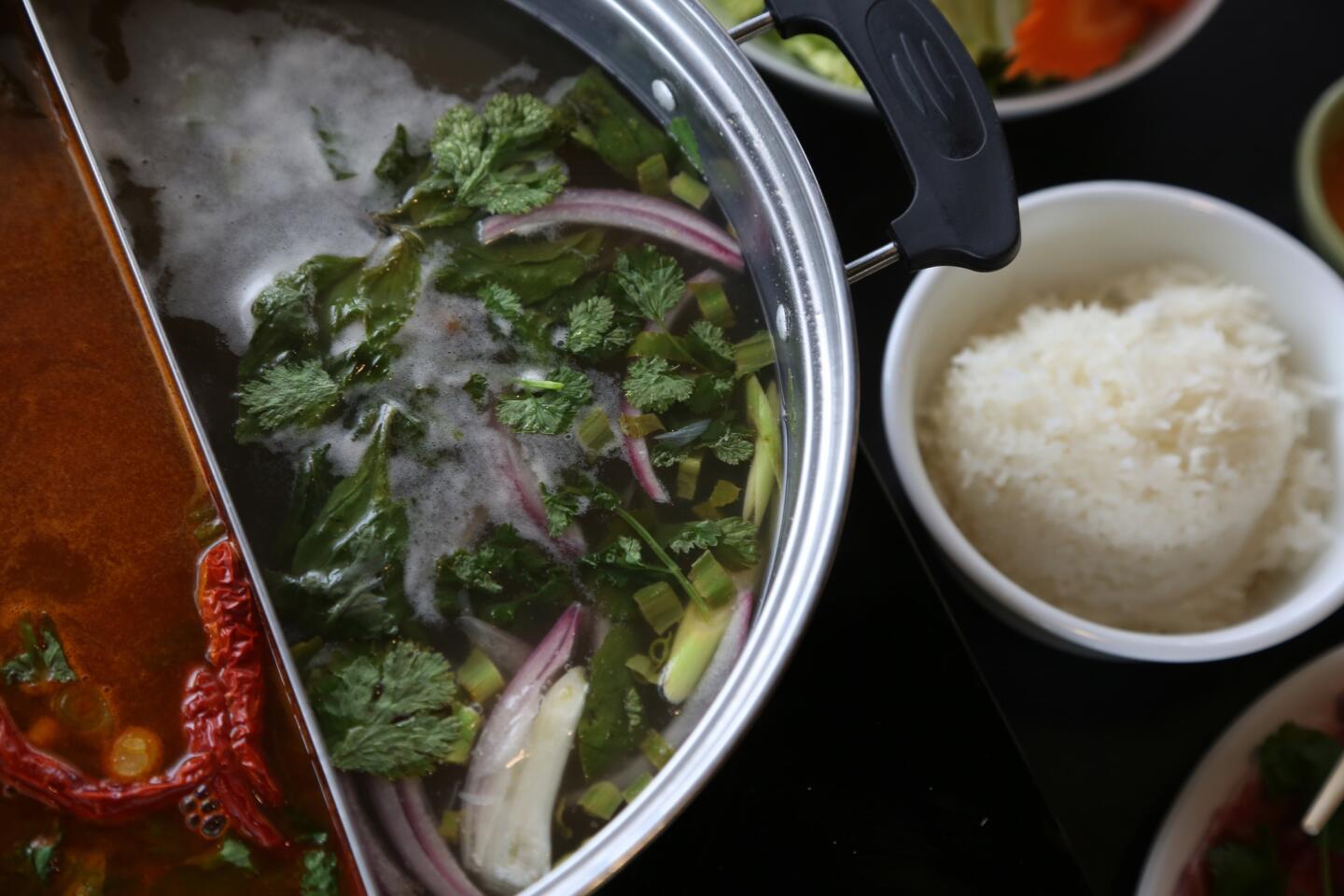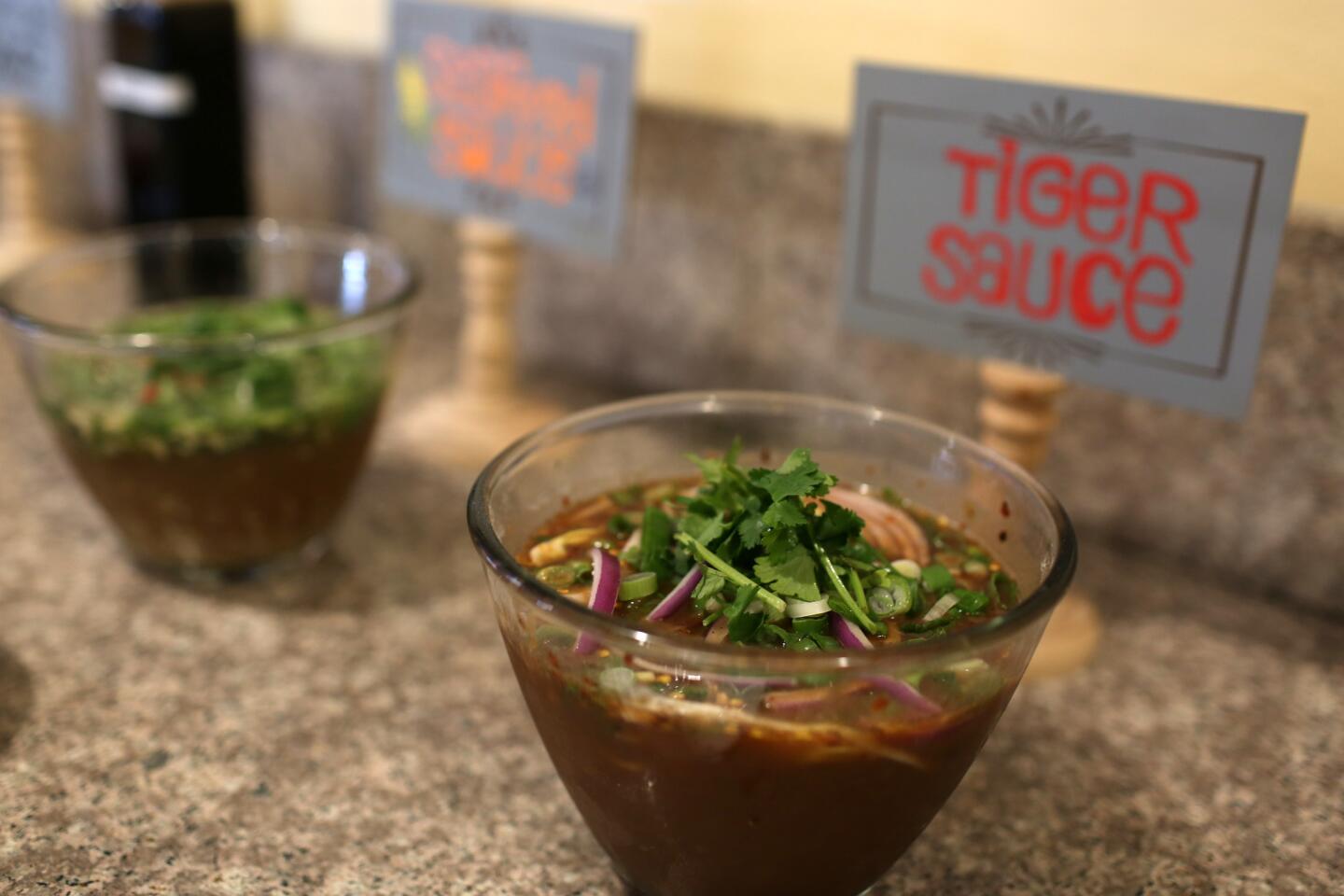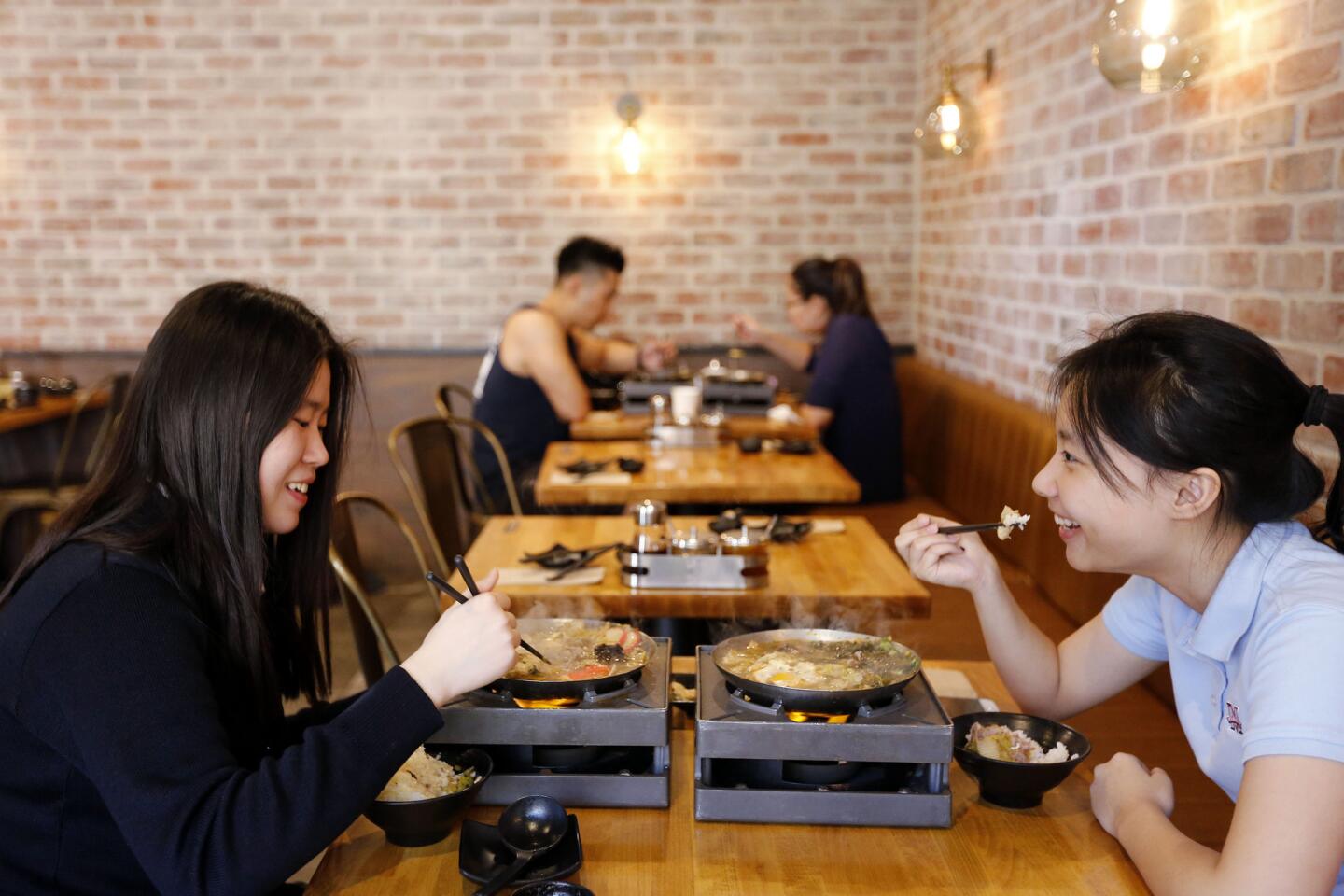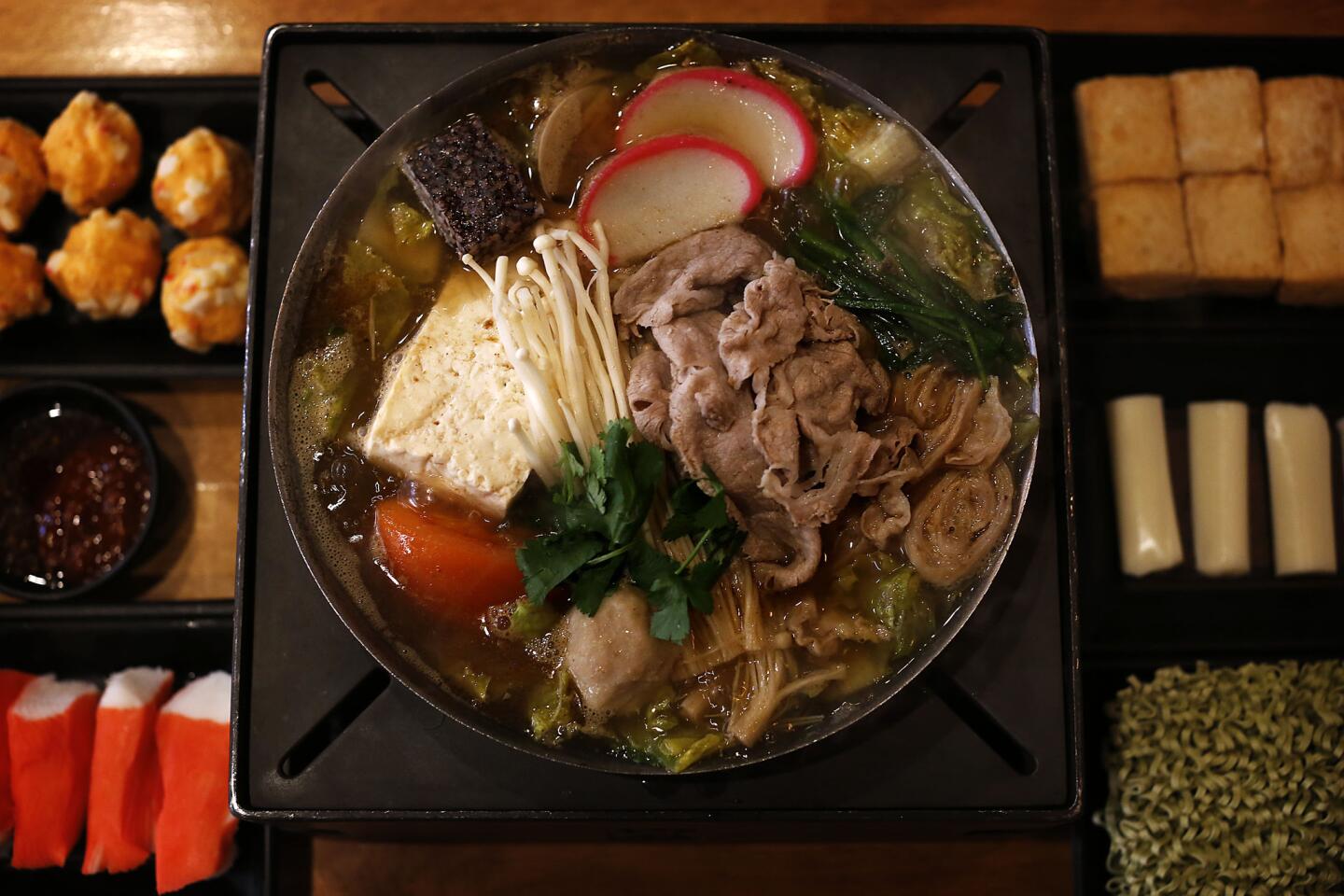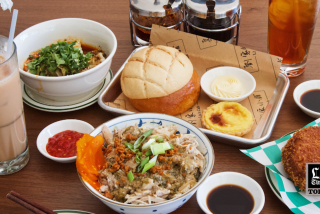Squad goal: Try all 6 of these hot pot styles at restaurants in L.A. and O.C.
When you’re going out for hot pot, don’t just invite any group of friends: First make sure your companions are reasonable, considerate, even empathetic diners, the sort of people who are good at trust games. Because when you reach your chopsticks into that boiling, shared kettle of broth, there has to be a mutual understanding that no one will leave that piece of Wagyu beef in the liquid for too long, that no one will crowd the pot and that no one will spill peanut dipping sauce into the broth, tainting your soup, and that hot pot experience, forever.
The hot pot is communal dining in its purest form, dating back more than 1,000 years to nomadic tribes in China. It involves cooking raw meat, fish and vegetables in a pot of boiling broth or water — all meant to be shared. Cultures from other Asian countries, including Japan, Thailand, Vietnam and Korea, have adopted their own versions of hot pots, each with different ingredients and accompanying dipping sauces.
See the most-read in Life & Style this hour >>
But as serious as hot-potting can be, it should be fun. There’s a reason why your local hot pot restaurant is likely to have an hour-long wait most nights. Swirling meat around and slopping it into a dozen dipping sauces (a meal you’ve cooked yourself) — this is supposed to be highly enjoyable. All across town, there’s no shortage of restaurants capable of delivering the full hot pot experience. There are as many styles of — and names for — hot pots as there are cultures who love them, so this is hardly a comprehensive list. Rather, here are some common types of hot pots, and where to find them, including the Japanese shabu shabu; jing-gee skhan, the Korean version of hot pot; the Thai version, called Thai suki, and the Vietnamese lau, which both often showcase more pungent flavors than the Japanese and Korean iterations; and the original Chinese Mongolian hot pot.
Korean jing-gee skhan: Seoul Garden

Prime beef and a plate of greens and other veggies, ready to go into the hot pot at Seoul Garden in Koreatown.
The hot pot at this Koreatown restaurant comes with gruel. Mostly Korean families and businessmen sit at the booths, crowded around large, steaming pots of stock in the middle, made from various cuts of meat and vegetables. The prime rib-eye hot pot is the most popular, the sliced meat painstakingly arranged in a pretty circle on a platter big enough to feed a family of four. It’s accompanied by an equally large platter of curly strips of green onion, fish cakes, mushrooms, tofu and plenty of cabbage. Swirl the meat and vegetables around in the clear broth until the ingredients are cooked the way you want, then dip everything in ponzu sauce. Once you’ve finished, your server will add udon noodles to the broth, then it’s time to make the gruel. Into the leftover broth goes a bowl of rice, some dried seaweed and an egg, then your server will furiously stir the mixture until it becomes a loose stew. The rice acts as a sponge for the broth, picking up the flavor from the beef, the vegetables and whatever else you threw in the pot over the last hour. Just think of it as a super porridge, and the perfect dessert. 1833 W. Olympic Blvd., Los Angeles, (213) 386-8477, www.seoulgardenla.com.
Japanese shabu shabu: Kagaya

At Kagaya in Little Tokyo, a table is set for Japanese shabu shabu.
People pay upward of $110 per person for a meal at Kagaya, the shabu shabu restaurant in the Honda Plaza in Little Tokyo, known for the quality of its meat and seafood. It’s a prix fixe meal, and depending on the night, your hot pot may come with steamed tofu, yellowtail sashimi and fresh wasabi, followed by barbecued eel in a broth studded with green onion and steamed fish with mushrooms. By the time your server brings the platter of meat and seafood for the hot pot, you’ve had a three-course tasting menu. The broth at Kagaya is chicken broth, mild in flavor, allowing the restaurant’s premium Wagyu beef and various seafood to really shine. The pots are served with chrysanthemum leaves, ponzu with grated daikon and a peanut sauce for dipping. After you’ve finished, you can choose between rice or udon noodles for the leftover broth, and an egg. Make sure you leave room for dessert, which, depending on the time of year, can be a strawberry sorbet with sweetened condensed milk, banana cake with ice cream or crème brûlée. 418 E. 2nd St., Los Angeles, (213) 617-1016.
Thai suki: Suki Time Thai Kitchen
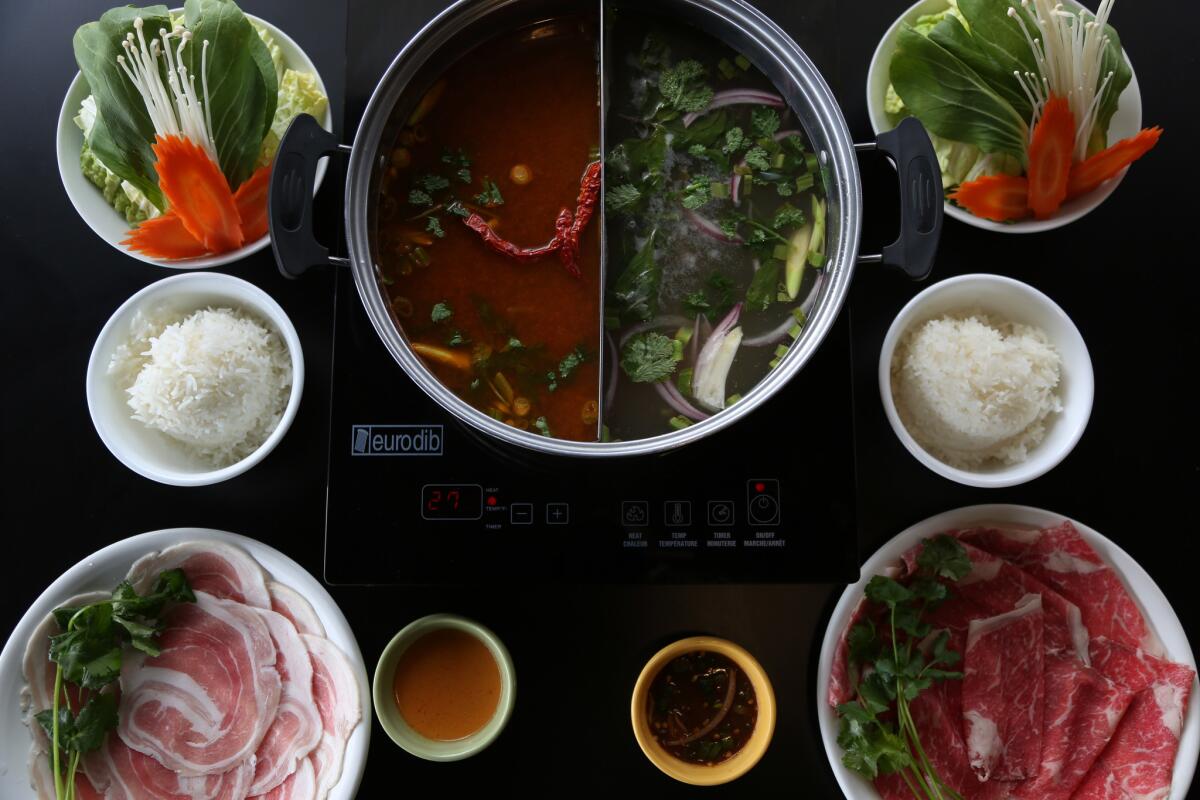
Two broths, the tom yum with pork belly, left, and Thai herb broth with prime beef at Suki Time in Lomita.
The hot pots at this Lomita restaurant are meant to remind you of the popular Thai soups available at most Thai restaurants, including tom yum and tom kha gai, only you put them together yourself. The broth labeled “herb soup” on the menu is a fragrant, tart combination of Thai basil, lemon grass, cilantro, green onion, fish sauce and toasted rice powder. It is not subtle. It imparts its varied flavors of sour, bitter and sweet into whichever meat you choose, including USDA prime beef, fish or chicken, and vegetables (mainly Napa cabbage and carrots). You’ll be tempted to throw everything into the boiling pot at once, then eat it as a composed soup. But don’t ignore the condiment bar. If you can manage to pluck a couple of pieces of meat and vegetables out of the broth to eat on their own, dip them into the “tiger sauce,” a sweet and spicy tamarind condiment with plenty of heat. 2271 Lomita Blvd., Lomita, (424) 347-7075, www.sukitimethaikitchen.com.
Vietnamese lau: OC & Lau
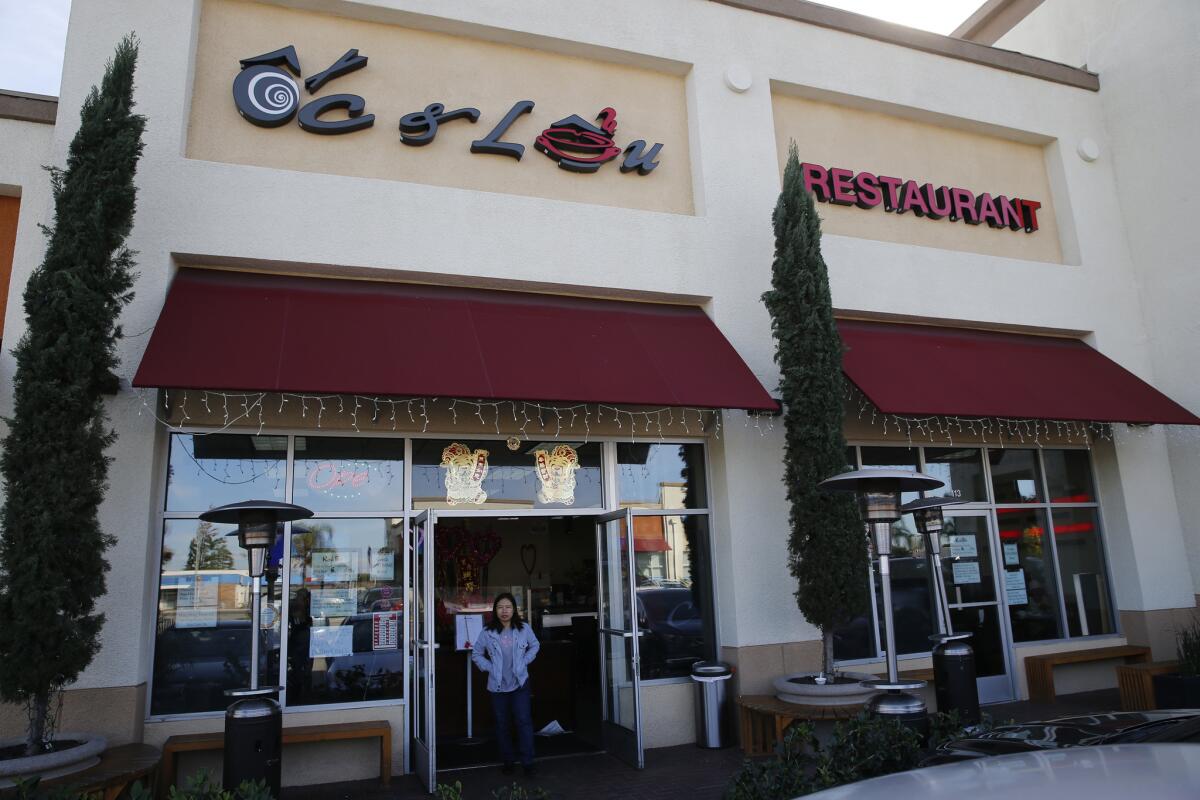
Exterior of OC & Lau in Garden Grove, specialists in Vietnamese hot pot.
Find out when the restaurant is serving the black cod hot pot, drive to Garden Grove, then carve out three hours for lunch or dinner, because this is a meal to be lingered over. The fresh cod is served in large pieces alongside a plate of Napa cabbage, slivered banana flower, sliced pineapple, wedges of tomato, okra, rice paddy herb, Thai basil and taro stem (an odd spongy vegetable that softens in the broth and tastes a bit like apple). Dunk the fish in the provided bubbling pot of sweet, tart broth made from boiled catfish head and bones, grilled onion, garlic, fish sauce, tamarind powder, sugar, salt and just a touch of MSG. It’s an intense, addictive broth, each sip slightly different than the one before it. Cook the fish until it’s just firm enough to remove from the broth without breaking apart, then dig in. The black cod is a special that comes around maybe once or twice a month. If they don’t happen to have it, order the sea bass hot pot, which is served with the same broth. 10130 Garden Grove Blvd., Suite 111-113, Garden Grove, (714) 636-2000, www.ocandlau.com.
Chinese hot pot: Little Sheep Mongolian Hot Pot

A steaming hot pot at Little Sheep in San Gabriel.
The San Gabriel Valley is home to every imaginable style of hot pot, but at Little Sheep Mongolian Hot Pot, there are no less than 36 ingredients in the broths. This popular Chinese import is known for its yin-yang broths — you can choose two styles, presented side by side — and for its magnificent condiment bar, rivaled only by the one at Hai Di Lao, the Chinese hot pot chain with a location at the Westfield Arcadia mall. At Little Sheep you’ll find an incredible selection of meat, vegetables and add-ins, including beef tripe, pork intestines and blood, cuttlefish balls and lamb shoulder. There are three kinds of tofu, six types of noodles, and everything from fried starch balls to seaweed knots available to drop into your hot pot. Decide what kind of day it is. Pork intestines and wood ear mushrooms, perhaps? Then visit the condiment bar for a little soy, vinegar, chile oil and sesame paste — an impromptu special dipping sauce. Multiple locations at www.littlesheephotpot.com.
Taiwanese hot pot: Boiling Point
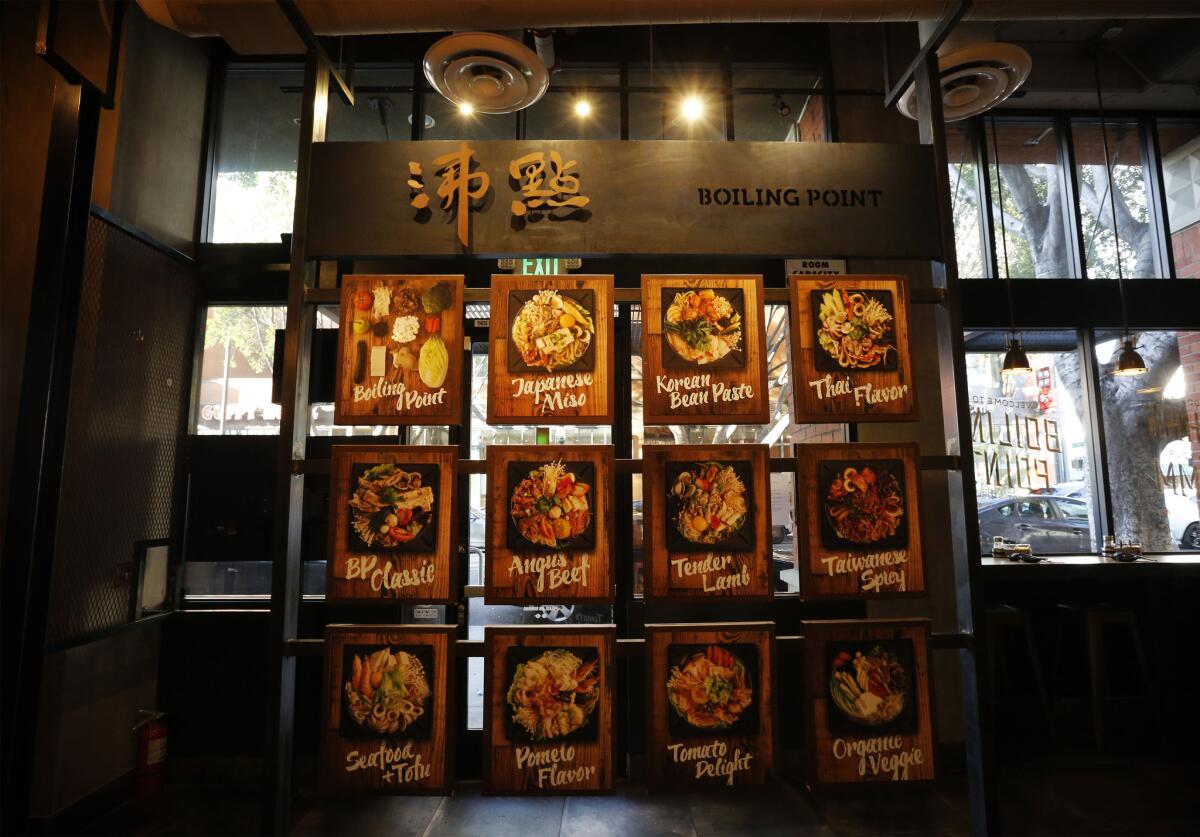
The menu at Boiling Point, a Taiwanese hot pot spot, which has several locations, including .
There’s a reason for the crowds gathered outside of all 12 SoCal locations of Boiling Point, the Taiwanese hot pot restaurant. While most other hot pots revolve around cooking your own meat and vegetables, Boiling Point is the lazy man’s version: Each diner is served an individual pot, near overflowing with whatever you order. The draw here is the House Special hot pot, which comes with Napa cabbage, fermented tofu, sliced pork, enoki mushrooms, fish cakes, pork meatballs, clams, quail eggs, pork blood cake, slices of pork intestine, garlic chives, preserved vegetables, tomato and cilantro. It’s difficult to know where to start. Maybe go with the rounds of intestine, with their deep, earthy pork flavor; attempt to break off a piece of the rich pork blood cake, or go straight for the quail egg, the yolk slowly oozing as you pierce it with your chopstick. Wherever you start, you win. Multiple locations at www.bpgroupusa.com.
Twitter: @Jenn_Harris_
More to Read
Eat your way across L.A.
Get our weekly Tasting Notes newsletter for reviews, news and more.
You may occasionally receive promotional content from the Los Angeles Times.
